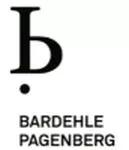1. Key takeaways
When the Court adjudicates on an application for
provisional measures pursuant to R. 211.2 RoP in conjunction with
Art. 62(4) UPCA, a sufficient degree of certainty (see also Art.
9(3) Directive 2004/48/EC) requires that the court considers on the
balance of probabilities, that it is more likely than not, that the
Applicant is entitled to initiate proceedings and that the patent
is infringed. A sufficient degree of certainty is lacking if the
Court considers it on the balance of probabilities to be more
likely than not that the patent is not valid (marginal no.
26).
Insofar as is relevant here, the burden of presentation and proof
for facts allegedly establishing the entitlement to initiate
proceedings and the infringement or imminent infringement of the
patent, as well as for all other circumstances allegedly supporting
the applicant's request, lies with the applicant. Whereas the
burden of presentation and proof for facts concerning the lack of
validity of the patent and other circumstances allegedly supporting
the defendant's position lies with the Defendant (marginal no.
27).
In the case at hand, the CoA set aside the order by the Court of First Instance and denied Claimant Dyson's request for provisional measures. Based on an essentially undisputed understanding of feature 1.3 ("cyclonic separating apparatus (18) arranged in communication with the suction conduit (14) for separating dirt and dust from the airflow"), requiring that the airflow was manipulated to flow tangentially around the circumference of an inner wall, thereby forming a helical airflow, the CoA was not convinced that this feature was realized by Defendants' SharkNinja's products, based on video sequences provided by Claimant: "These considerations lead to the conclusion that in the way Dyson has made its case, it is not more likely than not that the contested embodiments realise feature 1.3 of claim 1. On the balance of probabilities, it is not more likely than not that the patent is infringed."
2. Division
Luxembourg Court of Appeal
3. UPC number
UPC_CoA_297/2024
APL_32012/2024
4. Type of proceedings
Appeal proceedings re. request for provisional measures
5. Parties
APPELLANTS and Defendants in the main proceedings before the Court of First Instance:
- SharkNinja Europe Limited (Leeds, UK)
- SharkNinja Germany GmbH (Frankfurt am Main, Germany)
RESPONDENT and Claimant in the main proceedings before the Court of First Instance:
Dyson Technology Limited (Malmesbury, Wiltshire, UK)
6. Patent(s)
EP 2 043 492
7. Body of legislation / Rules
Rules 220.1, 212.3, 197.3 and 197.4 RoP
2024-12-03 UPC_CoA_297_2024 APL_32012_2024_en Download
The content of this article is intended to provide a general guide to the subject matter. Specialist advice should be sought about your specific circumstances.



